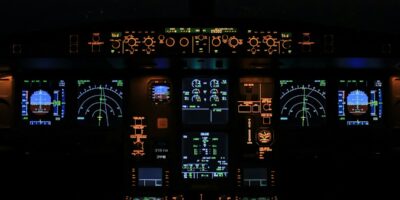
Southwest Merger
In the landscape of the airline industry, mergers and acquisitions have become a strategic play for growth and market expansion. Among such notable moves is the Southwest Merger, which dramatically altered the market dynamics and operational philosophies within the sector.
Understanding Southwest Airlines
Southwest Airlines, known for its low-cost and no-frills service model, has established itself as a formidable player in the US domestic air travel scene. Founded in 1967, it has built a strong reputation for affordable fares and a customer-centric approach. The airline operates on a point-to-point model, as opposed to the hub-and-spoke system used by many of its competitors. This strategy has allowed Southwest to offer more direct and often cheaper flights.
Strategic Rationale Behind the Merger
Mergers in the airline industry are typically driven by the need to achieve economies of scale, expand route networks, and enhance operational efficiencies. For Southwest, the motivation behind merging included gaining access to new markets, increasing its geographic footprint, and leveraging operational synergies. By combining resources, Southwest aimed to reduce costs, increase revenue, and enhance shareholder value.
The AirTran Acquisition
In 2011, Southwest Airlines completed the acquisition of AirTran Airways. This acquisition allowed Southwest to enter new markets, particularly in the eastern United States and the Caribbean. AirTran’s operations at Atlanta’s Hartsfield-Jackson International Airport provided Southwest with a substantial presence in one of the busiest airports globally. The integration of AirTran’s fleet and routes into Southwest’s network was a complex and carefully managed process, ensuring minimal disruption to passengers.
Operational Integration
The integration involved synchronizing AirTran’s operations into Southwest’s point-to-point model. Southwest transitioned AirTran’s fleet to Boeing 737 aircraft to maintain consistency in operations and reduce maintenance costs. Training programs were conducted for staff to align the service protocols and operational procedures of both airlines. Information technology systems and back-office operations were also integrated to streamline processes and improve efficiency.
Impact on Route Network
The merger significantly expanded Southwest’s route network. New routes to previously untapped markets like the Caribbean became feasible. Additional flights to popular destinations provided more options for travelers and increased competition. The expanded network also allowed for better connections, reducing layover times and improving the overall travel experience.
Financial Outcomes
Financially, the merger proved beneficial for Southwest. The airline realized significant cost savings through operational efficiencies and increased revenue from an expanded route network. The company’s operating costs per available seat mile (CASM) decreased, while revenue per available seat mile (RASM) saw an uptick. These metrics underscore the financial health and operational effectiveness post-merger.
Consumer Benefits
Passengers reaped the benefits of the merger through more flight options and competitive fares. Southwest’s renowned customer service standards were maintained and extended to a broader audience. Access to more destinations without the need for connecting flights improved travel convenience.
Regulatory Approval
Securing regulatory approval for the merger required demonstrating its alignment with antitrust laws. It involved presenting a case that the merger would not reduce competition but rather enhance it by providing more choices to consumers and driving down fares. The approval process was rigorous but ultimately successful.
Challenges Faced
The merger was not without its challenges. Integrating two airlines with different operational models and corporate cultures required careful management. Aligning brand identities while retaining the distinctive elements of each created a unique challenge. Staff redundancies and reassignments also had to be managed sensitively to maintain morale and operational continuity.
Technological Integration
Merging the technological infrastructure of both airlines was a significant project. Ensuring seamless integration of reservation systems, flight operations software, and customer service platforms was critical. Transitioning these systems required extensive planning, testing, and implementation to avoid disruptions to service.
Brand Evolution
The merger facilitated an evolution in Southwest’s brand. While the airline retained its core identity of low-cost travel and excellent customer service, it also embraced new market segments and passenger demographics. Enhanced marketing strategies and new service offerings reflected this evolution.
Environmental Considerations
The merger also brought environmental considerations to the forefront. Fleet modernization efforts included acquiring more fuel-efficient aircraft, which helped reduce overall carbon emissions. Operational efficiencies from the merger also contributed to a lower environmental impact through optimized flight paths and reduced fuel consumption.
Employee Integration
Integrating the workforce from both airlines was a key focus. Training programs ensured that all employees adhered to Southwest’s service standards and operational procedures. Opportunities for career progression and the retention of experienced staff from both airlines were prioritized to enhance the merged airline’s capabilities.
Customer Loyalty Programs
Merging loyalty programs from both airlines was essential to retain frequent flyers. Southwest’s Rapid Rewards program was expanded to include former AirTran customers. This expansion ensured continuity of benefits and incentivized customer loyalty.
Competitive Landscape
Post-merger, Southwest faced a transformed competitive landscape. The expanded route network positioned the airline to challenge legacy carriers more effectively. Increased market presence pressured competitors to innovate and adapt to the evolving market dynamics shaped by Southwest’s strengthened position.
Market Share Growth
The merger facilitated significant growth in market share for Southwest. Increased presence in key markets like Atlanta and new routes to international destinations drove this growth. Higher market share provided leverage in negotiations with suppliers and airport authorities.
Regulatory Compliance
Ongoing regulatory compliance remained a priority post-merger. Adhering to aviation safety standards, labor regulations, and consumer protection laws was continuously monitored. The merger’s scale required enhanced regulatory oversight to ensure compliance across a more extensive operational footprint.
Operational Efficiency
Operational efficiency measures included optimising flight schedules, enhancing baggage handling systems, and streamlining ground operations. These measures contributed to improved on-time performance and reduced operational costs.
Network Optimization
Post-merger, the airline optimized its network to balance demand and capacity effectively. Route profitability analyses guided decisions on route additions, deletions, and frequency adjustments. This optimization ensured high load factors and maximized revenue while maintaining service quality.
Fleet Modernization
Fleet modernization was accelerated post-merger. Replacing older aircraft with newer, more efficient models helped reduce maintenance costs and improve fuel efficiency. These efforts aligned with Southwest’s commitment to sustainability and long-term operational viability.
Customer Satisfaction
Southwest continued to prioritize customer satisfaction. The airline maintained its no-fees policy for checked bags and flight changes, which resonated well with passengers. Enhanced in-flight services and an expanded route network further contributed to positive customer experiences.
Corporate Social Responsibility
Corporate social responsibility initiatives included community engagement, charitable contributions, and environmental stewardship. These efforts reinforced Southwest’s brand values and strengthened its relationship with stakeholders.
Key Learnings
Insights from the merger emphasized the importance of strategic planning, effective communication, and meticulous execution. Southwest’s approach to integration served as a model for future mergers in the industry. The balance between operational efficiency and maintaining customer-centric service was crucial.




Subscribe for Updates
Get the latest articles delivered to your inbox.
We respect your privacy. Unsubscribe anytime.